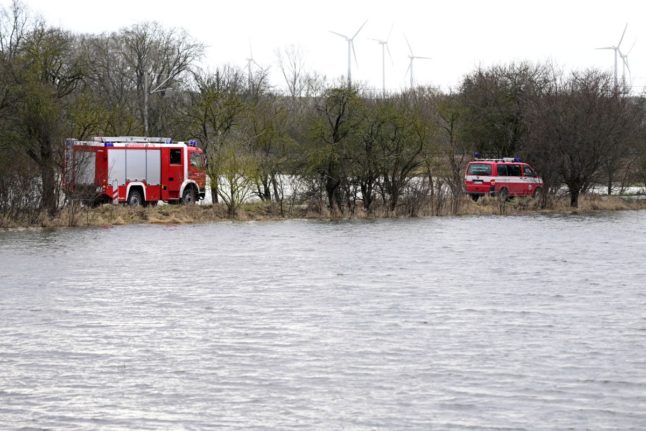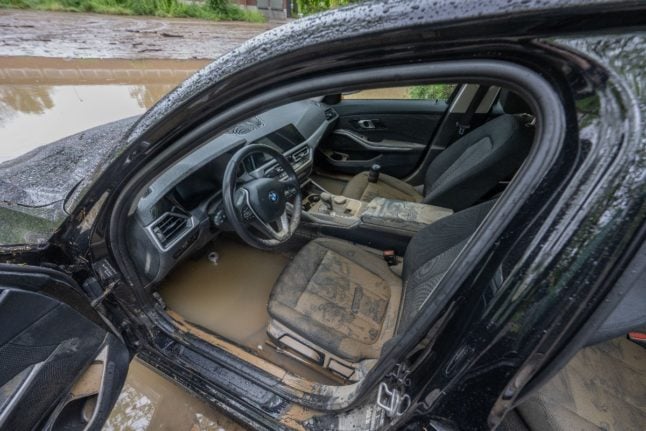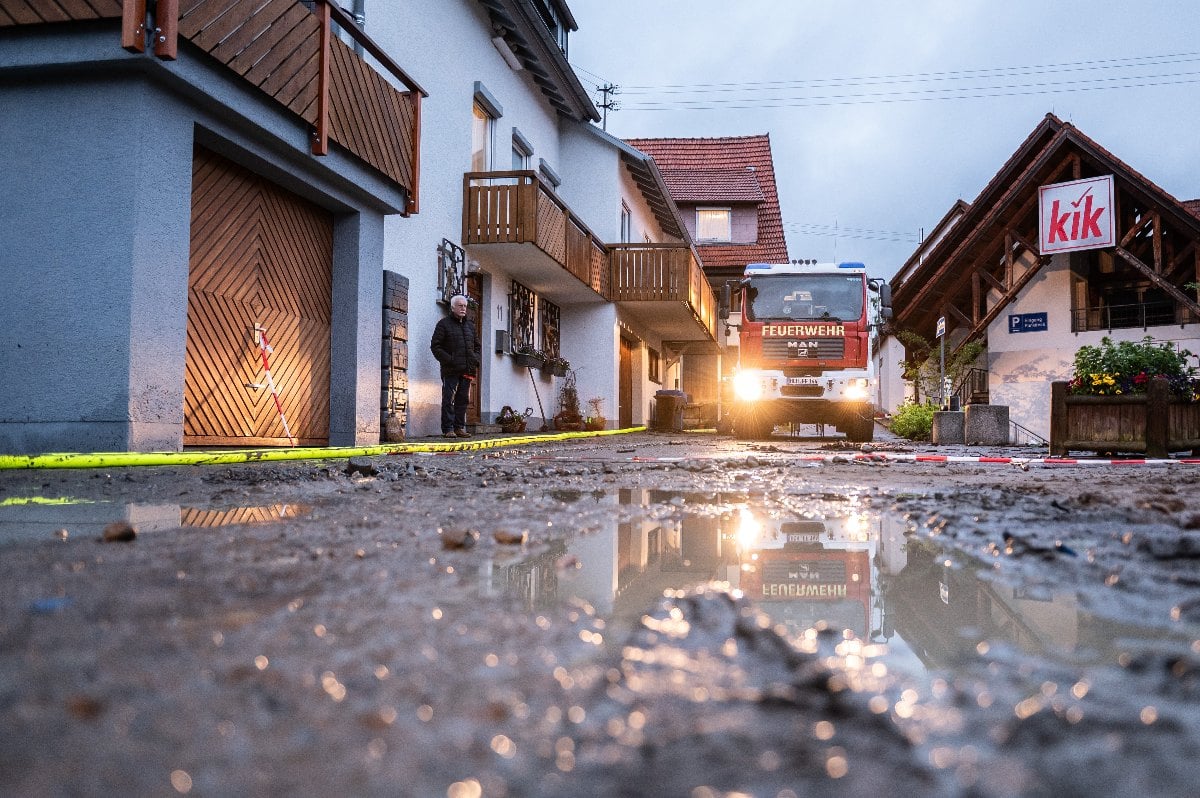Thousands of emergency services, including Technical Relief Agency THW, fire departments and the police, are still on duty because of the flooding, said a spokesman for the Ministry of the Interior in Hanover, the capital of Lower Saxony, on Saturday.
Although the ground remains saturated from the rain “the weather forecasts are favourable to us because there is no longer such heavy rainfall,” he said.
Saxony-Anhalt
In the flood area in Saxony-Anhalt, the water levels of the Thyra – which flows into the Helme from Harz – have fallen slightly, a spokesperson for the Mansfeld-Südharz district told DPA on Saturday.
The river burst its banks in places just before the end of 2023.
German soldiers have also been deployed here since Friday to help stabilise a section of the dike – the first deployment of the army in the current flood situation.
Saxony
The weather is expected to turn colder this weekend, with incoming frost expected to help ease the situation in the flood area, according to a local spokesperson.
READ ALSO: Germany braces for blast of snow and freezing temperatures
There is also relief in sight for the flooded Elbe in Saxony.
As the state’s Flood Centre announced on Saturday, there has been hardly any rain recorded in the Saxon and Czech Elbe catchment areas since Friday.
Looking forward, only a small amount of precipitation is expected there in the coming days, and this is forecast to turn into snow from Saturday evening.
Lower Saxony
Experts think that some rivers in Lower Saxony have now reached their peaks, but water levels are expected to stay high for the time being or only fall slowly, Saturday’s situation report from the flood forecast centre of the State Office for Water Management, Coastal Protection and Nature Conservation (NLWKN) showed.
Numerous water gauges in the state still reported a level three – the highest level – on Saturday, specifically the catchment areas of the rivers Aller, Leine, Oker, Hase, Hunte and Weser.
But experts say there are signs the flood situation on the Aller, Leine and Oker rivers will ease, as virtually no new rainfall is forecast from Sunday.
Nonetheless, water levels are expected to remain high on the Aller and Leine until next week, they said.
READ ALSO: What parts of Germany are hardest hit by flooding?
The flood situation is still being considered an “extraordinary event” in the city of Oldenburg, as well as the districts of Celle, Oldenburg, Emsland, Osterholz, the Heidekreis and Verden, which were particularly badly affected by the flood, a spokesman for the Lower Saxony Ministry of the Interior said.
This status means that districts or cities can access support workers more easily, but the state has not requested assistance from the army so far, the Ministry said.
However, the Bundeswehr did prepare for a possible deployment on Friday and put forces from the 1st Panzer Division on standby.
North Rhine-Westphalia
The flood situation in North Rhine-Westphalia remains tense but stable, according to the state’s Ministry for the Environment.
On Saturday, a Ministry spokesperson said that water levels were mostly decreasing.
High water levels are expected to continue next week, but with a decreasing trend on the Rhine.
Rhineland-Palatinate
In Rhineland-Palatinate, Rhine water levels are already falling, and the flood forecast centre said it does not expect them to rise again next week.
Saarland
Water levels on rivers in Saarland are also falling and, despite rain and light snowfall, further rises are not anticipated, the Saarland flood situation report from Saturday showed.
Hesse
The flood situation in Hesse has also eased with the prolonged period of rain coming to an end.
Water levels are falling on the Hessian sections of the Rhine and Main, the Hessian State Office for Nature Conservation, Environment and Geology (HLNUG) in Wiesbaden said on Saturday morning.
Nationwide
The weather is changing throughout the country: “The exceptionally mild westerly weather that has been going on for weeks, which has brought us lots of rain and floods, is now finally coming to an end,” said meteorologist Christian Herold of the German Weather Service (DWD).
“The weather situation is fundamentally changing to winter,” he said.
Temperatures are no longer forecast to exceed zero during the day and snow is expected – especially in the north and the south of the country.
Central German regions, meanwhile, should expect frost.




 Please whitelist us to continue reading.
Please whitelist us to continue reading.
Member comments